Especially in the numbers-focused green-car arena, some healthy competition can do wonders. And the latest 2020 Hyundai Sonata Hybrid, revealed at the Chicago Auto Show today, looks to be a great example of that.
Just two and a half years after the arrival of the current Toyota Camry Hybrid and its 52-mpg EPA combined rating—the first midsize sedan for the U.S. market to earn more than 50 mpg—the Sonata Hybrid has arrived to rival the Camry’s 52 mpg.
In the Sonata’s case, Hyundai claims an EPA-cycle (not yet confirmed) 52 mpg combined, with 50 mpg city, 54 highway—a mammoth 10-mpg improvement over the outgoing model’s 42 mpg combined. And if you need a big, roomy sedan but can’t plug in, the Sonata Hybrid’s 54-mpg highway rating is likely the best on the market.
That’s in its top-efficiency Blue version. Other versions of the Sonata Hybrid will come with a rating of 45 mpg city, 51 highway, and 47 combined. That puts them a slight bit behind the Honda Accord Hybrid, if you value city mileage.
The Sonata Hybrid’s strength relative to other hybrids has has always been in highway driving, and it stems from its different layout, which Hyundai appears to have carried over from the previous Sonata Hybrid. There’s a 6-speed “conventional” automatic transmission, with a single electric motor packaged between the transmission and the engine. The engine itself is from Hyundai’s latest Smartstream engine family, a 2.0-liter inline-4 that makes 150 horsepower and 139 pound-feet of torque—with a system output of 192 hp.
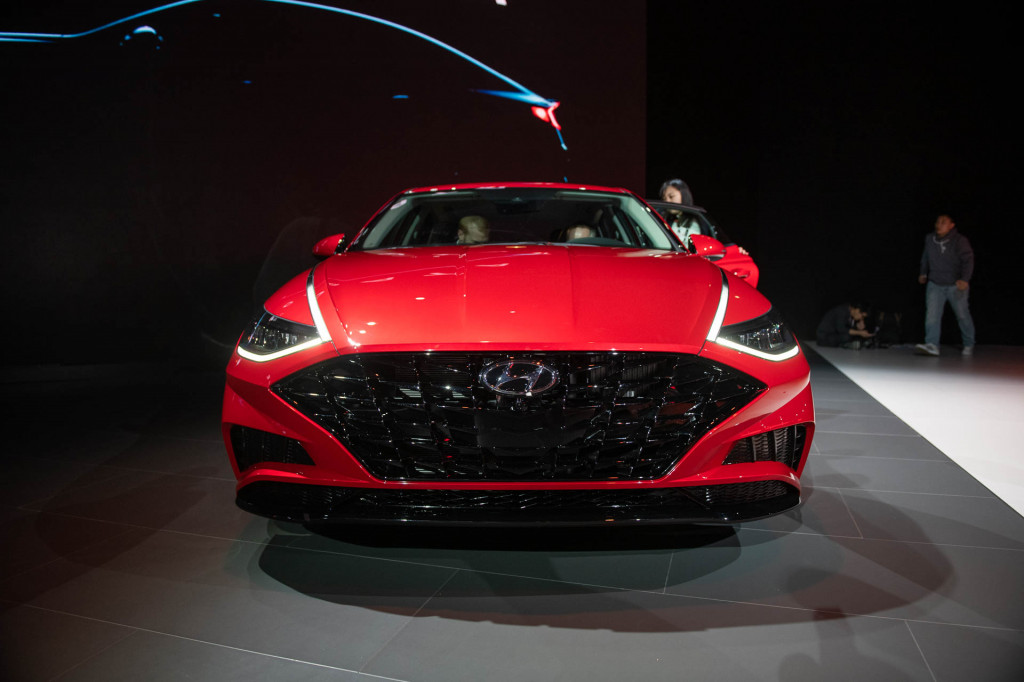
2020 Hyundai Sonata, 2019 New York International Auto Show
The new Sonata Hybrid has a 0.24 coefficient of drag, compared to 0.27 for the rest of the Sonata lineup. The improvement is no simple task, and the product of a bumper lip, front- and rear-wheel deflectors, and undercovers for the bottom of the engine bay, floor, and rear.
But it’s more than an updated powertrain and a smoother body. Various bits of technology that the parent company has been teasing about this model for the past year or more all seem to have made their way into this high-mileage sedan, making it decidedly higher on the eco-cred scale, even if it doesn’t have a charging port (a new Sonata Plug-In Hybrid will be coming soon).
While the Sonata Hybrid carries through with essentially the same transmission and hybrid-system setup as the previous generation, the new one gets Active Shift Control technology that uses a separate sensor to more precisely match electric motor speed with engine speed—making the shifts themselves 30% quicker and altogether smoother to the driver.
That system also adds to durability by reducing shift shock. And although Hyundai hasn’t confirmed yet, it could add to efficiency.
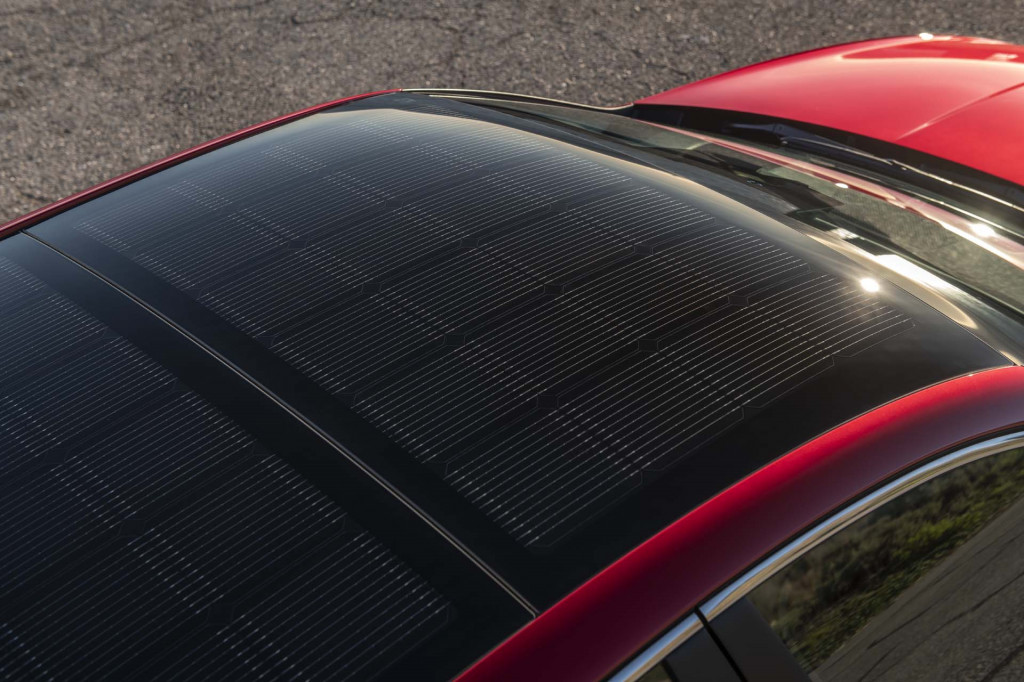
2020 Hyundai Sonata Hybrid
The U.S.-spec Sonata Hybrid is also arriving with the Solar Roof System that was teased for a debut in the model back in October 2018. Unlike other solar roof systems that have been offered on the Nissan Leaf and Toyota Prius Plug-In, which have just charged the accessory battery, this one actually charges up the hybrid battery.
The solar feature can charge both the 12-volt and hybrid batteries, with an output of up to 205 watts, and can help avoid battery discharge when you’re using accessories but not driving the car. In test form, Hyundai said that it could charge the 1.56-kwh pack 60-percent of the way with a day of sunshine.
An option on the Sonata Hybrid lets you say farewell to fobs. With a smartphone-based (Android only!) Hyundai Digital Key, you use a combination of Near Field Communication (NFC) and Bluetooth Low Energy (BLE) technology to allow unlocking and starting, by you or those who are approved by you, without a key.
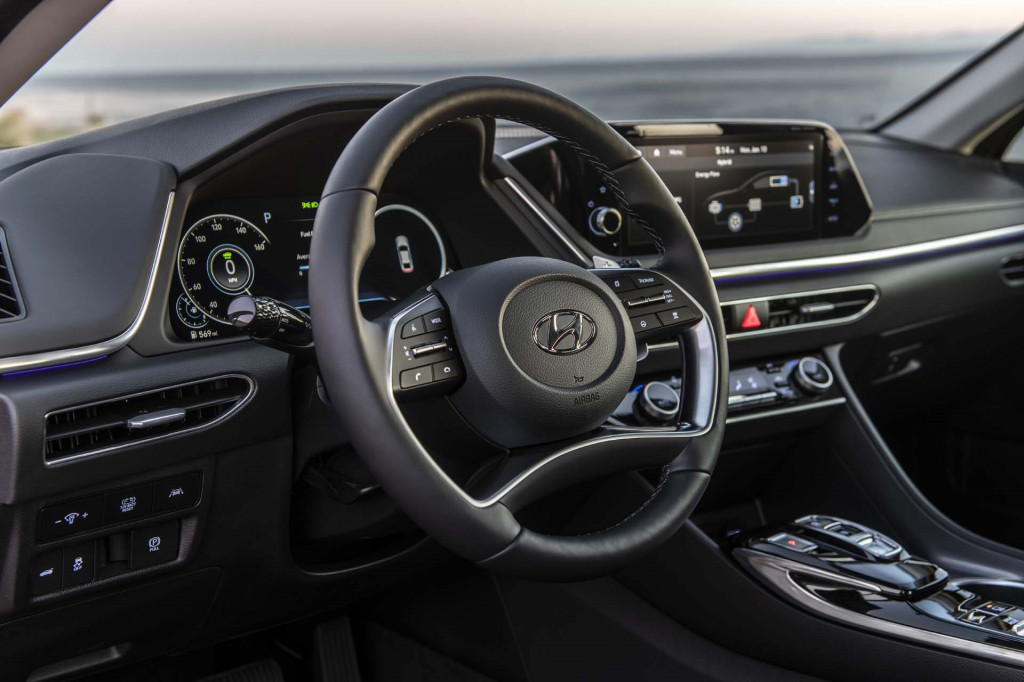
2020 Hyundai Sonata Hybrid
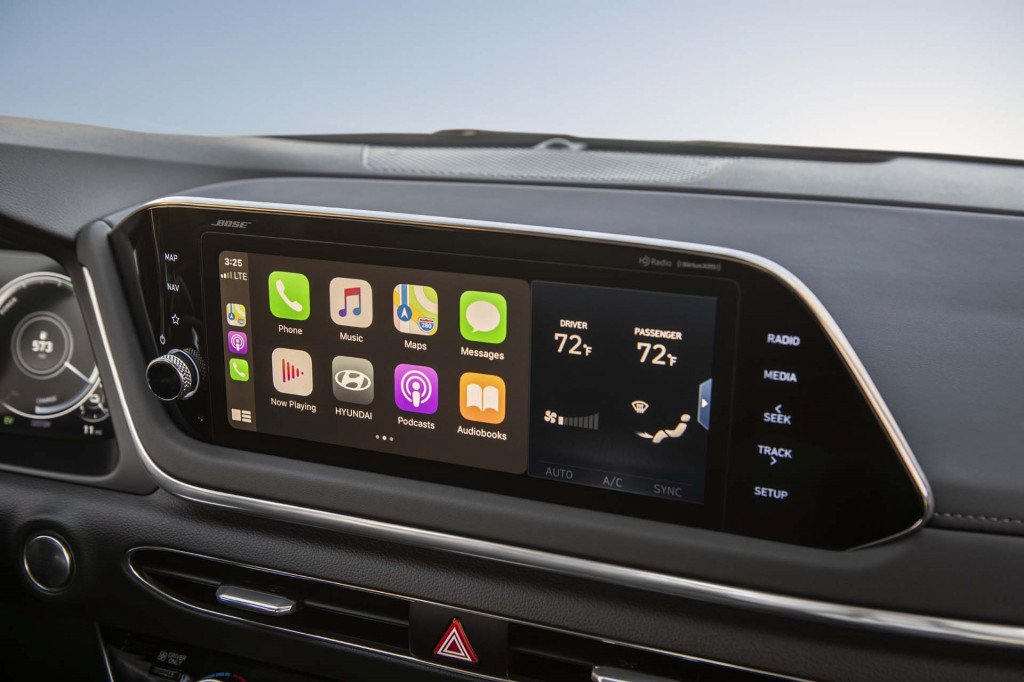
2020 Hyundai Sonata Hybrid
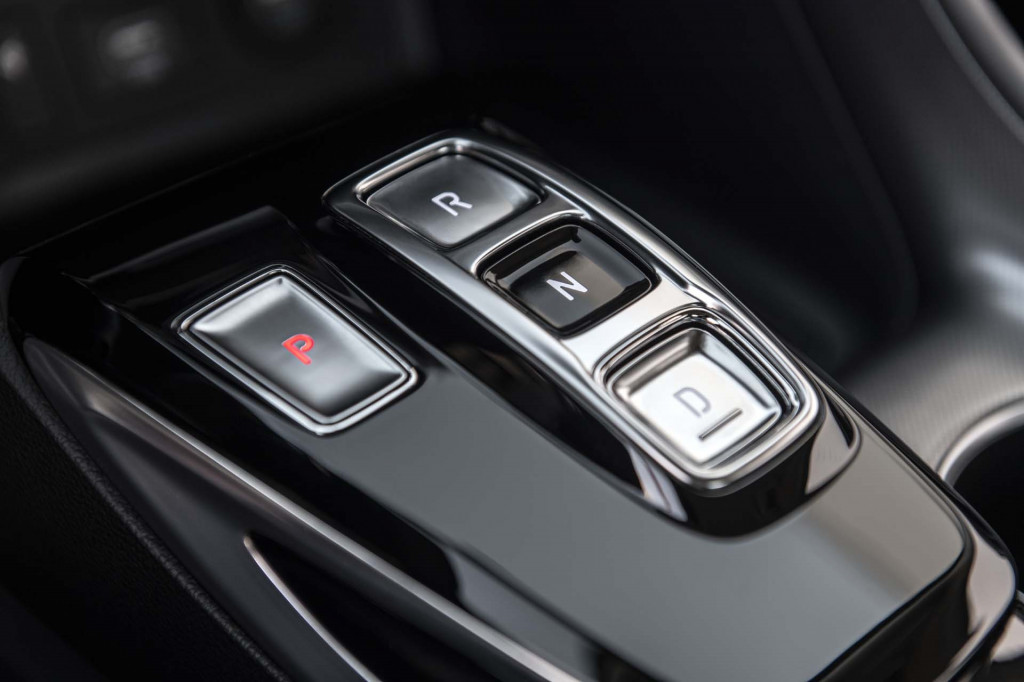
2020 Hyundai Sonata Hybrid
Otherwise, the Hybrid comes standard with Apple CarPlay and Android Auto compatibility in an 8.0-inch touchscreen infotainment system. A 10.25-inch touchscreen with cloud-based Blue Link speech recognition and bird’s-eye navigation views is available as a step up, and Qi wireless charging (with a cooling fan) and Bose audio are on offer.
Hyundai has added double-junction soundproof glass to both the windshield and front doors, as well as improved carpet and additional sound absorbing materials—so as with the rest of the revamped 2020 Sonata lineup, it may prove an even more pleasant cabin to ride in.
More about the lineup, along with pricing and features, is expected soon, as the Sonata Hybrid is still expected to go on sale this spring.